Bringing Birds Home
One of the main causes of bird population decline is loss of habitat, especially in Arizona’s expanding urban centers. You can help! By providing the right food, water and shelter you can attract birds to your yard. This page will offer a few tips and tricks to transform your yard into an urban oasis for birds and hours of entertainment for yourself!
Hummingbirds
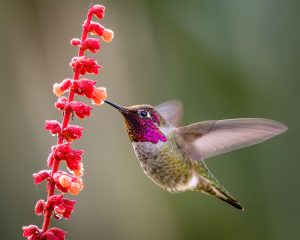
Southern Arizona has the most hummingbird species in the entire United States! Your yard is a perfect place to observe many of them. Make it a gardening project by planting native plants which are sure to attract hummingbirds and butterflies to your yard. Tubular flowers are a hummingbird’s favorite! Hang a feeder to observe their aerial dances done with quickness and precision. To protect these birds do not use pesticides on your plants or food dye in their food.
See our Partners pages for native plant lists and pesticide alternatives.
Find the feeder nectar recipe and more tips here.
Cholla Dwellers
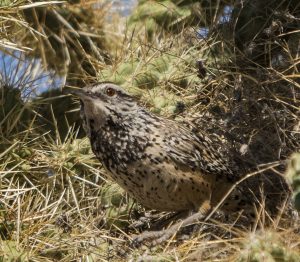
Cholla cacti are easy to grow from cuttings, use little water, and sprout colorful flowers of whimsical shapes. Arizona is home to 16 different species of cholla cactus! Certain birds use the sharp spines for nest protection. Curve-billed Thrashers build a stick nest with an open top while Cactus Wrens (Arizona’s State Bird) build one or more nests of weeds, grass and twigs with a side entrance. Provide them with dense bushes and brush piles for shelter and foraging.
See what other factors help attract these birds here.
Desert Finches
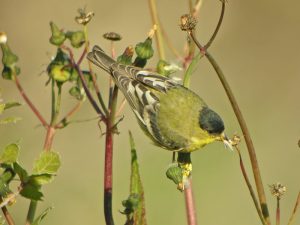
Lesser Goldfinches and House Finches are great backyard dwellers as they don’t mind human company and thrive on seeds from your plants! You can hang an additional thistle seed feeder and observe activity all day. Don’t remove dry flower heads until these desert finches have gotten a chance to enjoy them.
Find out which plants they love and other tips here.
Gambel’s Quail
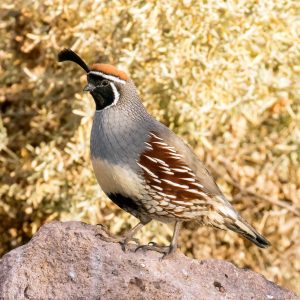
Gambel’s Quail thrive in native desert gardens even nesting in flower pots! They’ll make a great addition to your yard. You could watch their adorable babies without having to leave your home. Just make sure to provide hiding places by planting bushes and shrubs intermixed with open spaces for safe foraging. Feed quail on schedule and watch as they arrive on time each day!
Find out what plants they love and other tips here.
Tiny Raptors
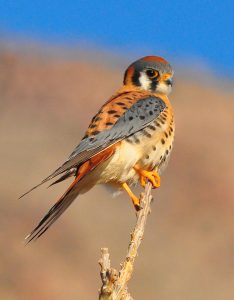
Western Screech-Owls and American Kestrels can both do well in urban Tucson with a little help. Both raptors can live together in an area and work in a day shift and night shift removing insects and other pests—natural and free pest control! Shrub cover, water and desert trees with nest holes will attract them to your yard. You could also put up nest boxes if you don’t have any natural cavities. Don’t worry, American Kestrels are too small to affect your other birds and the Western Screech-Owls are mostly active at night.
Find out more fun facts about these Tiny Raptors here.
FOR ALL BIRDS
- Keep cats inside
- Avoid pesticides
- Set up a fresh water feature
- Plant native plants for food and shelter
If you provide the right habitat for birds they will pay you back with insect/weed control and hours of birding entertainment!
Links to our partners for more information:
Desert Survivors — Non-profit Native Plant Nursery
Pima County — Living with Urban Wildlife